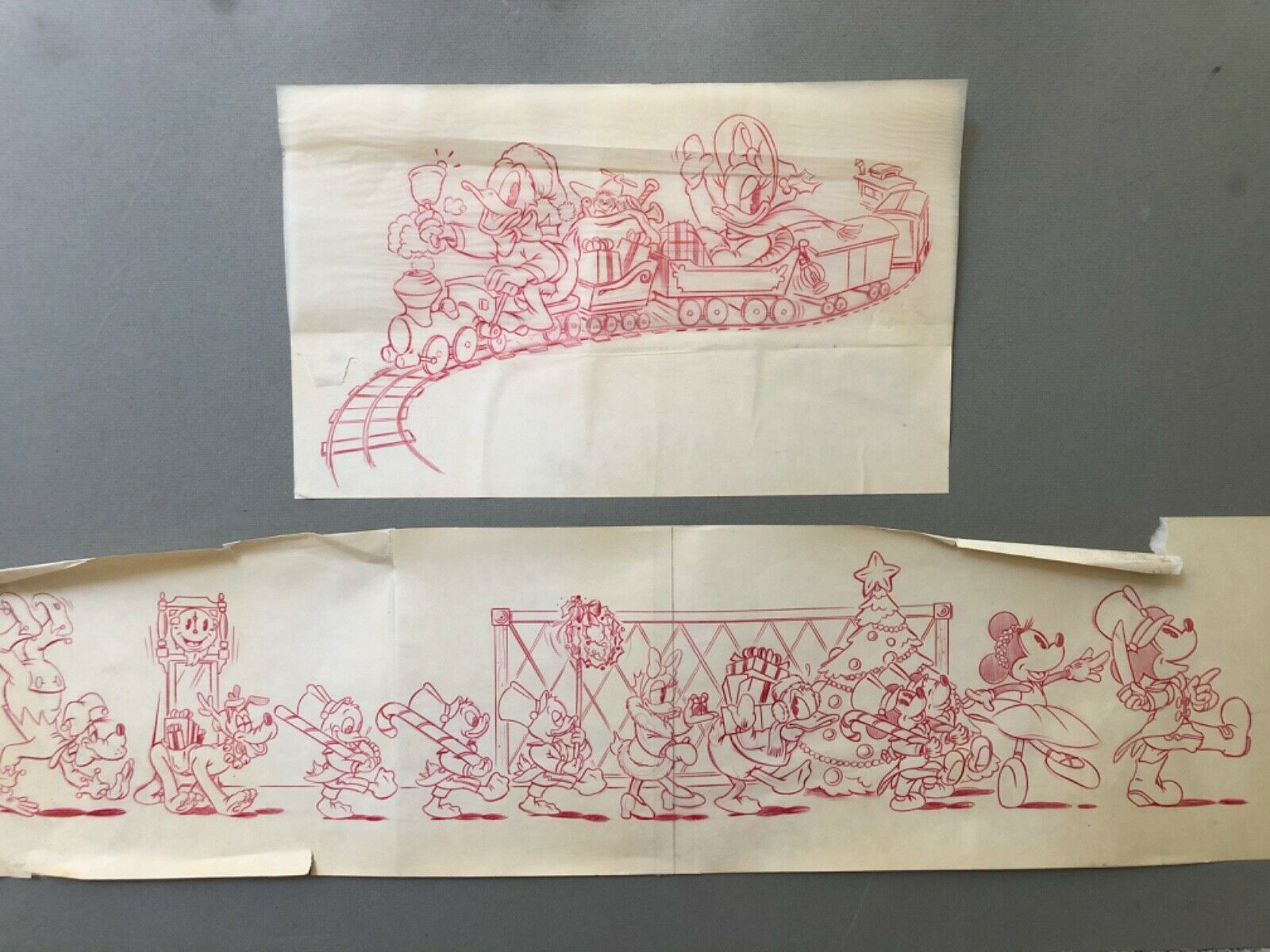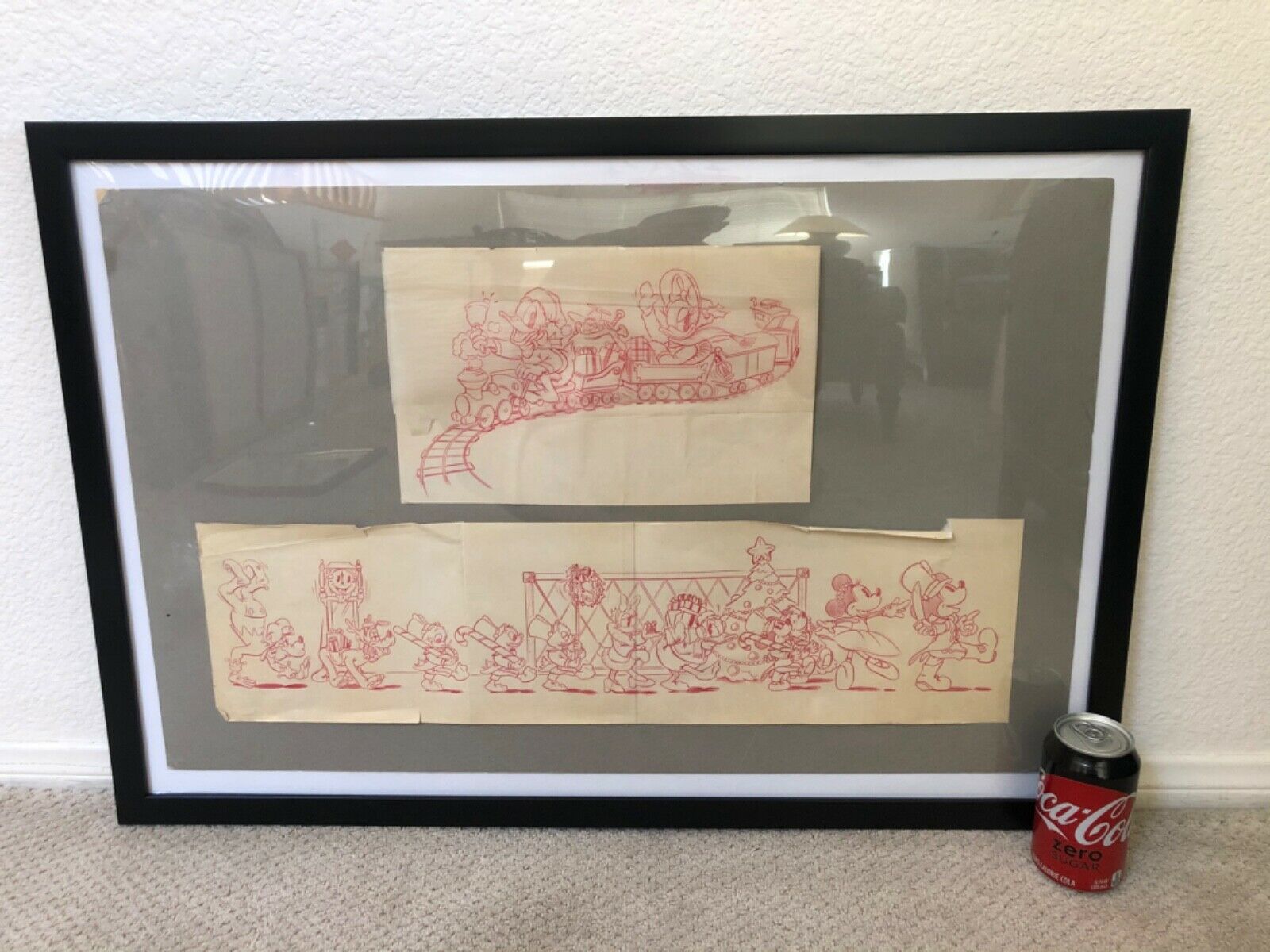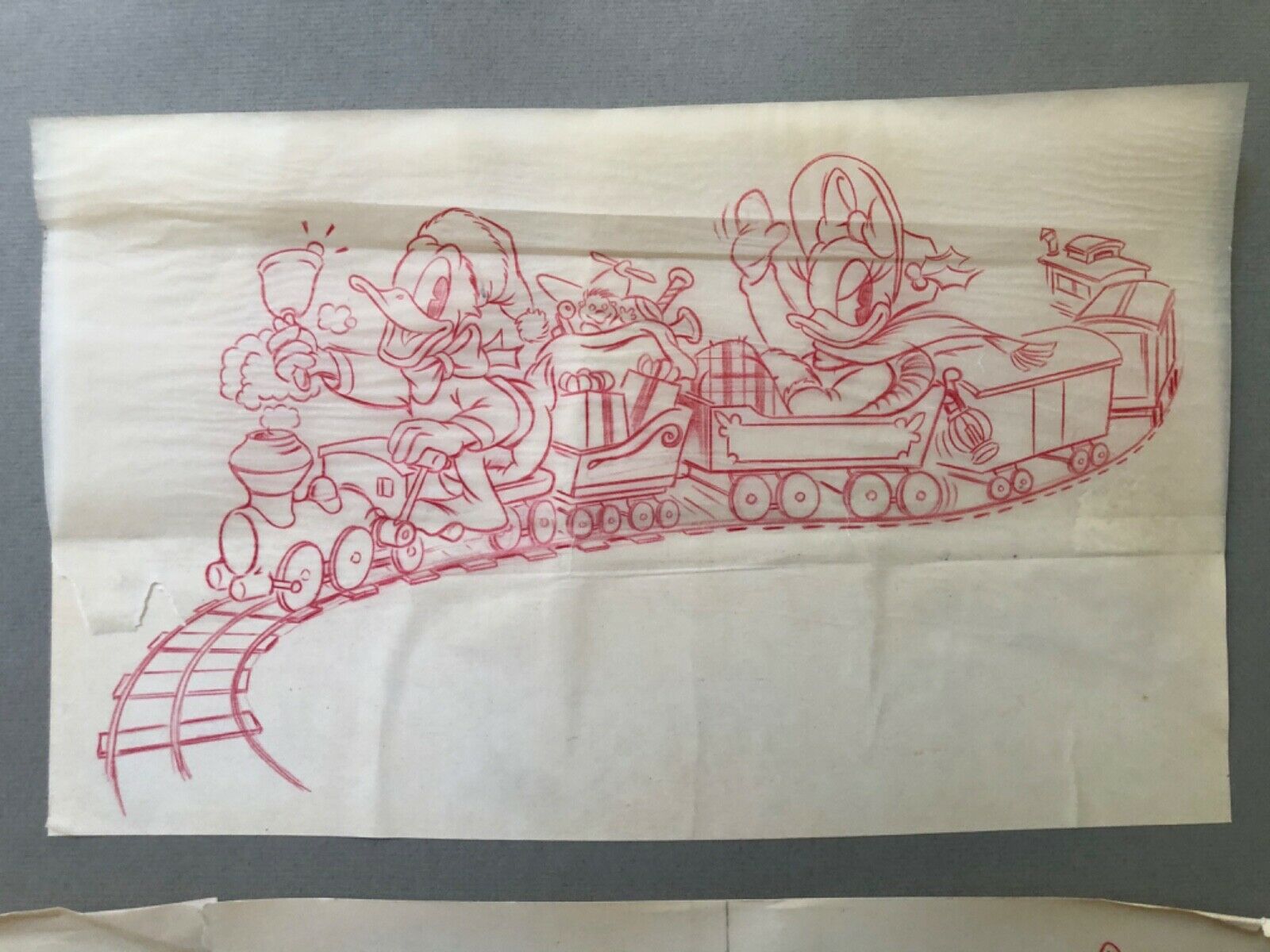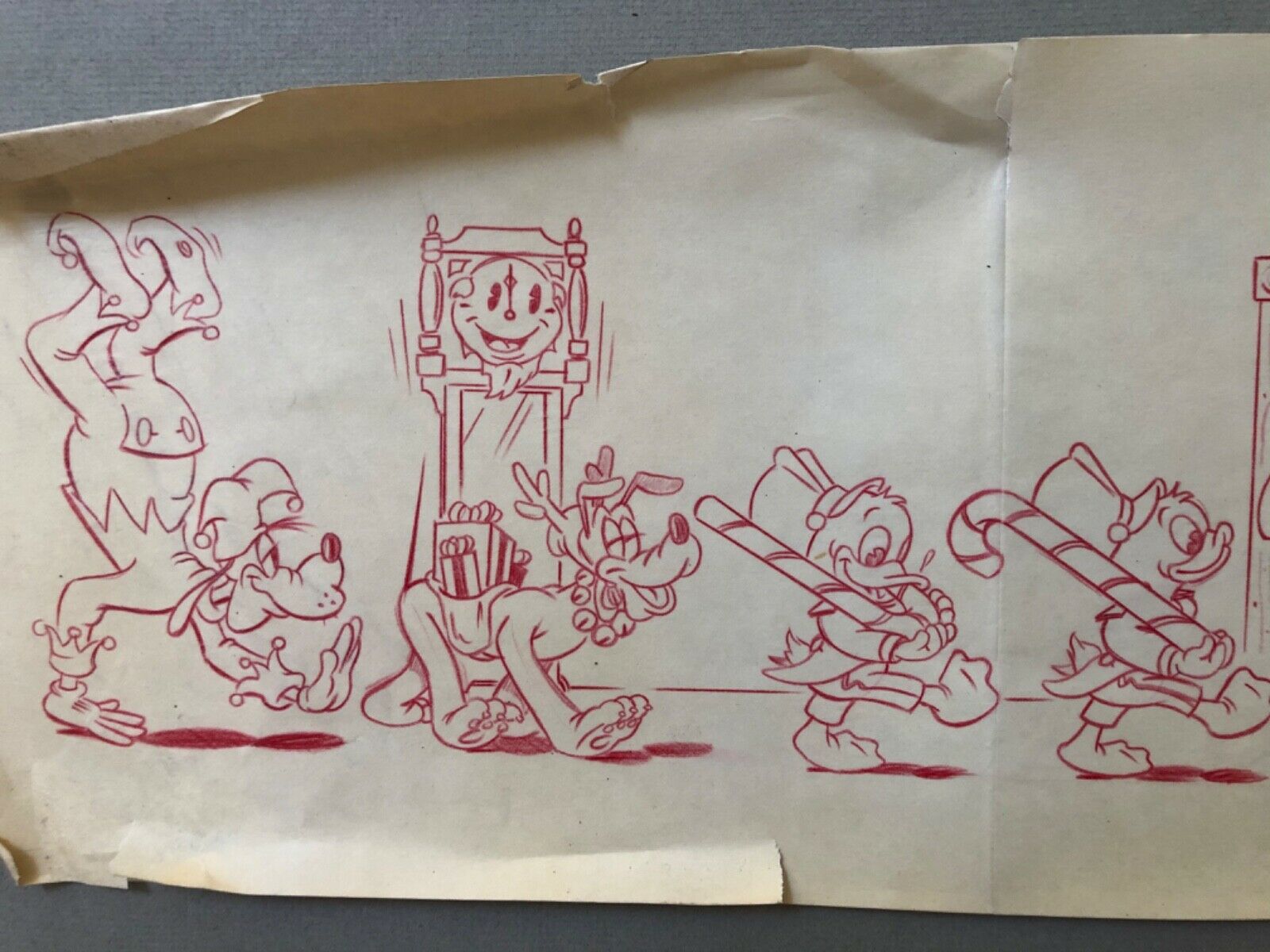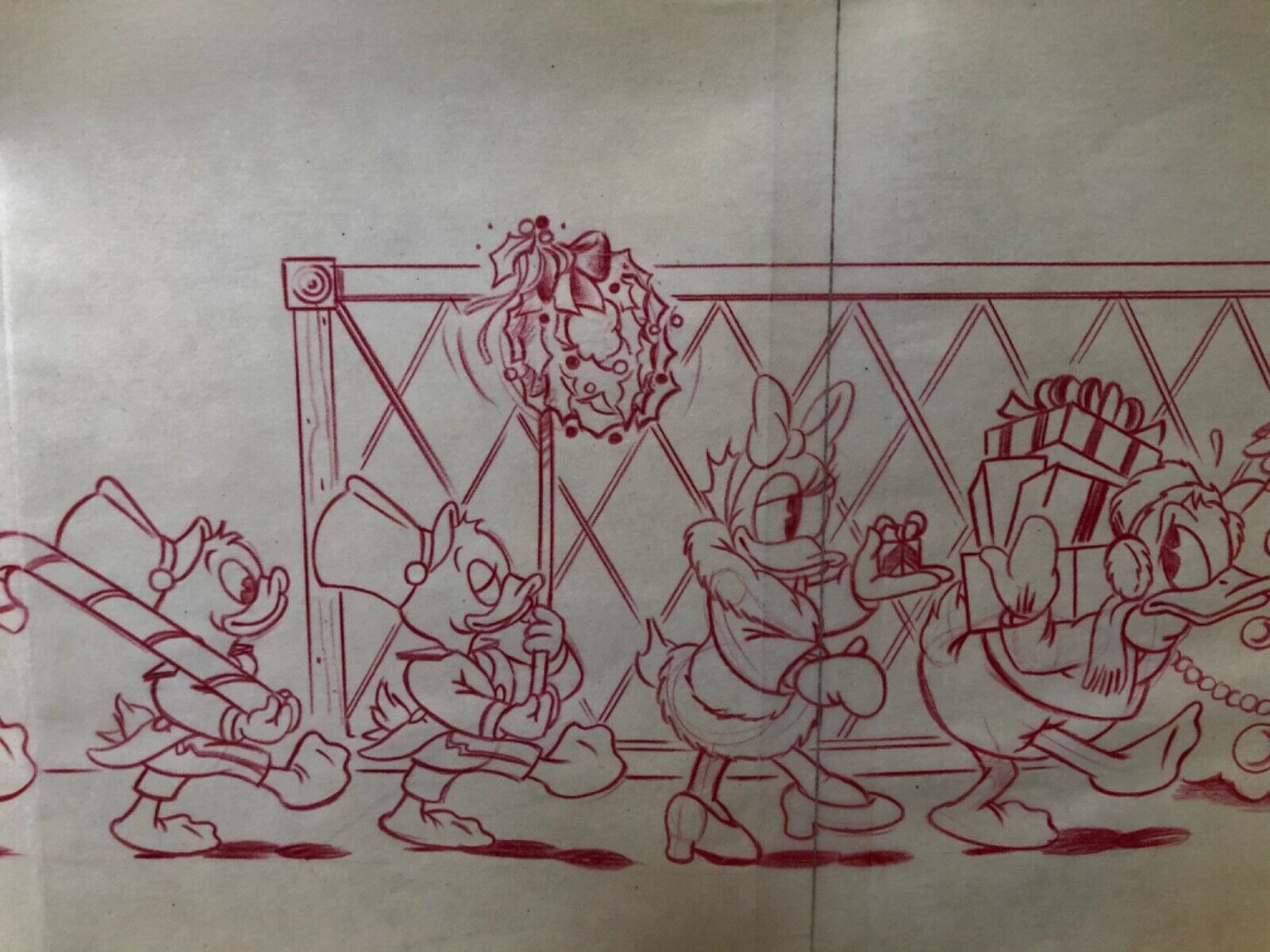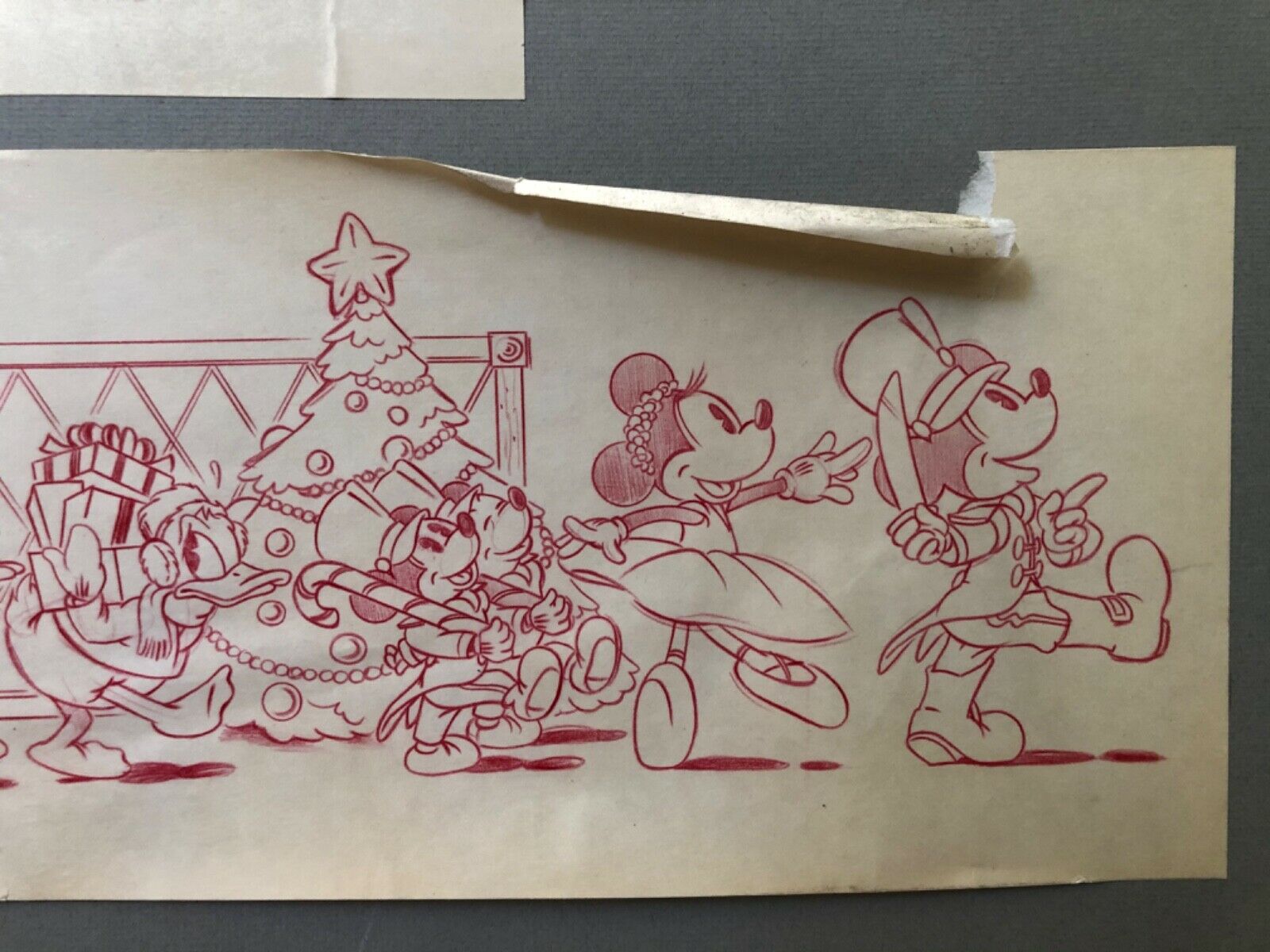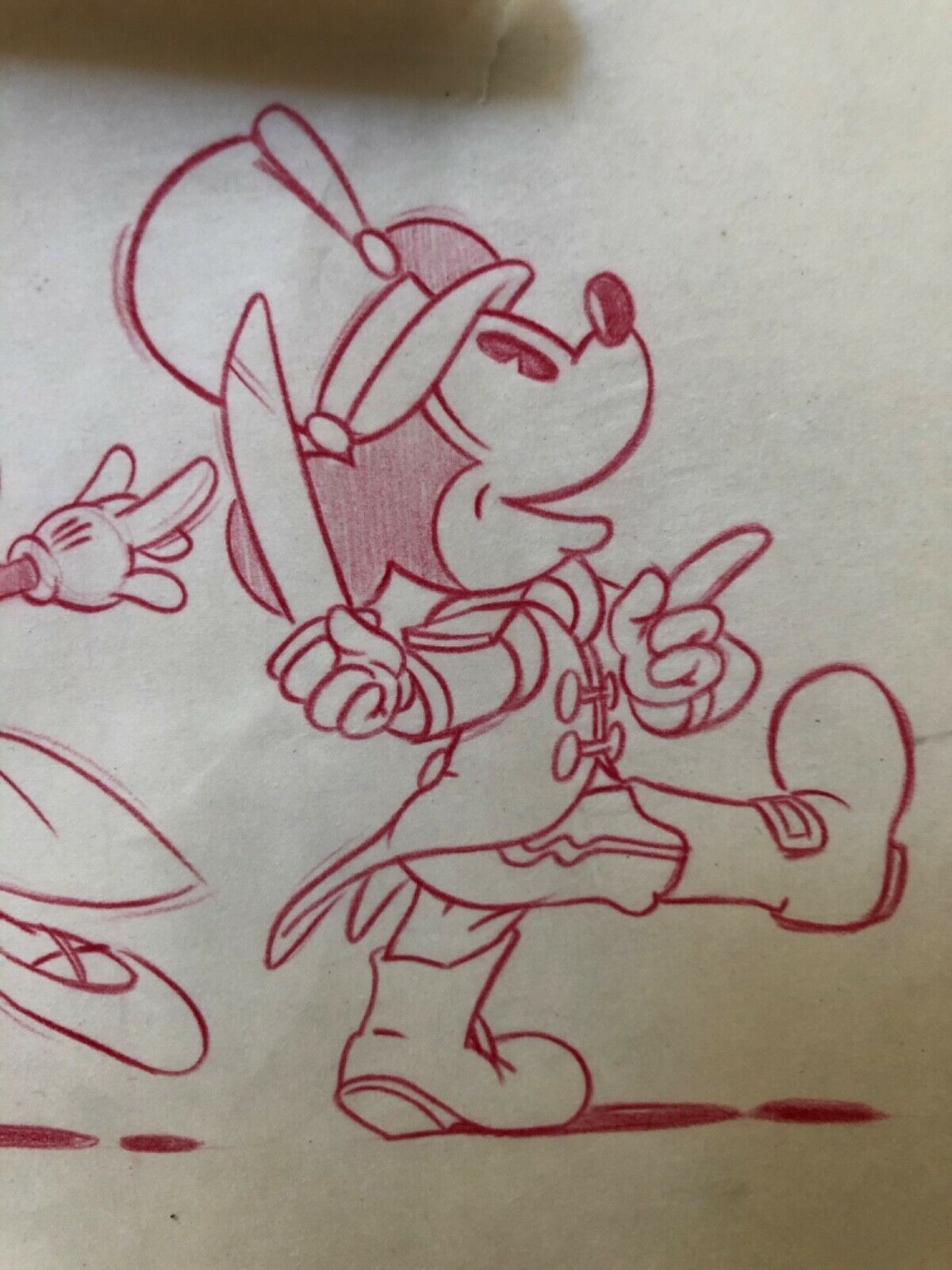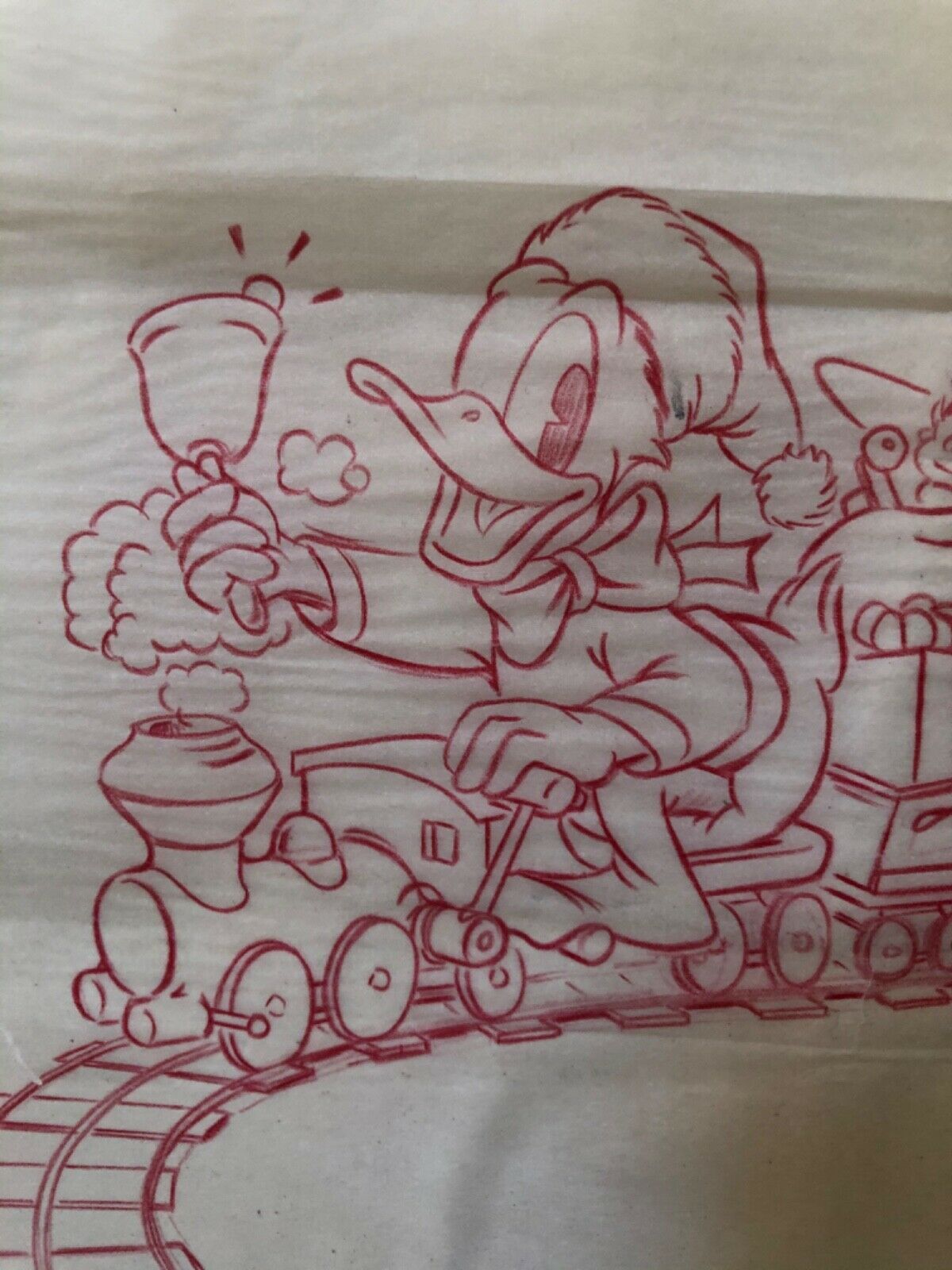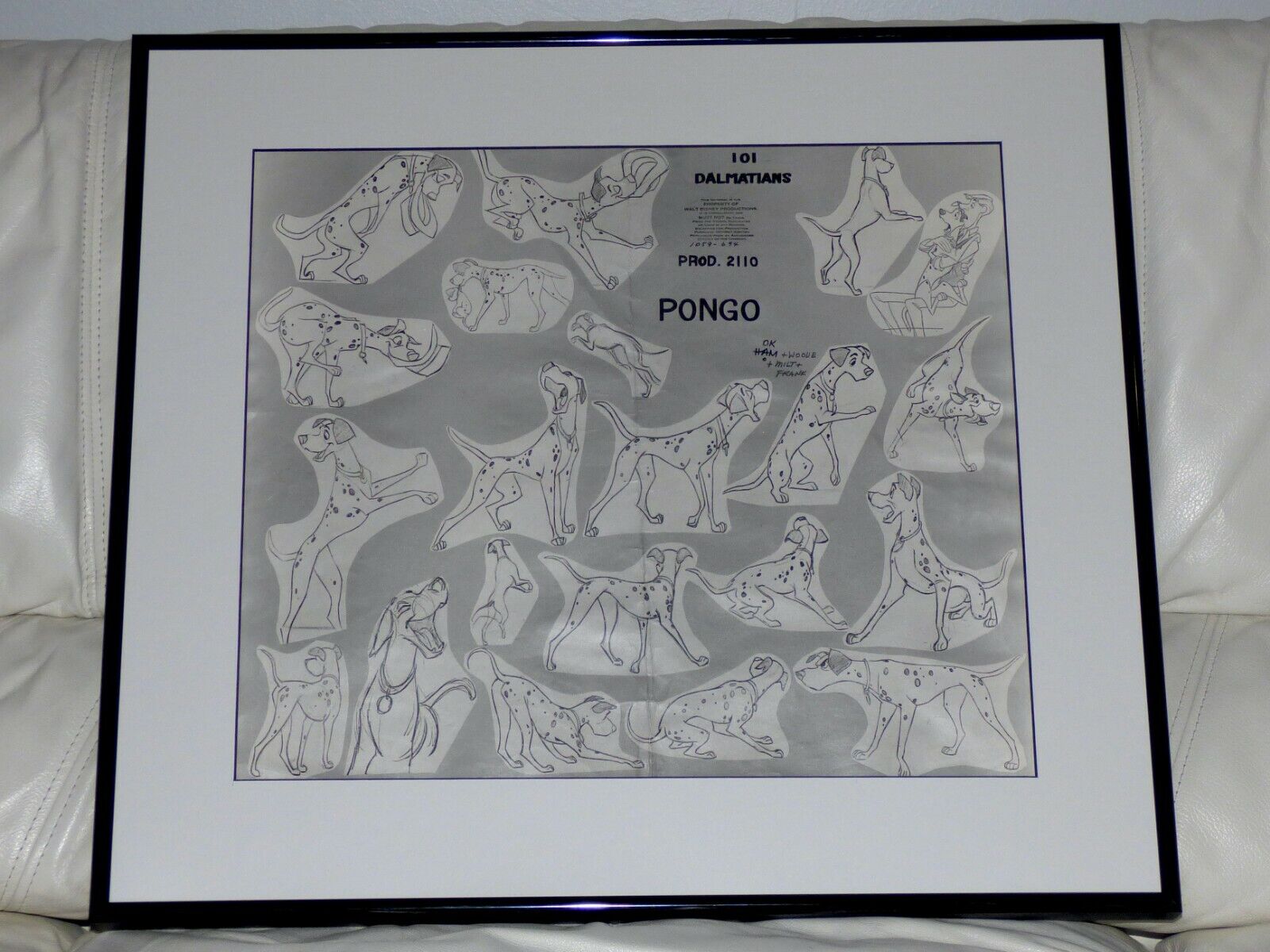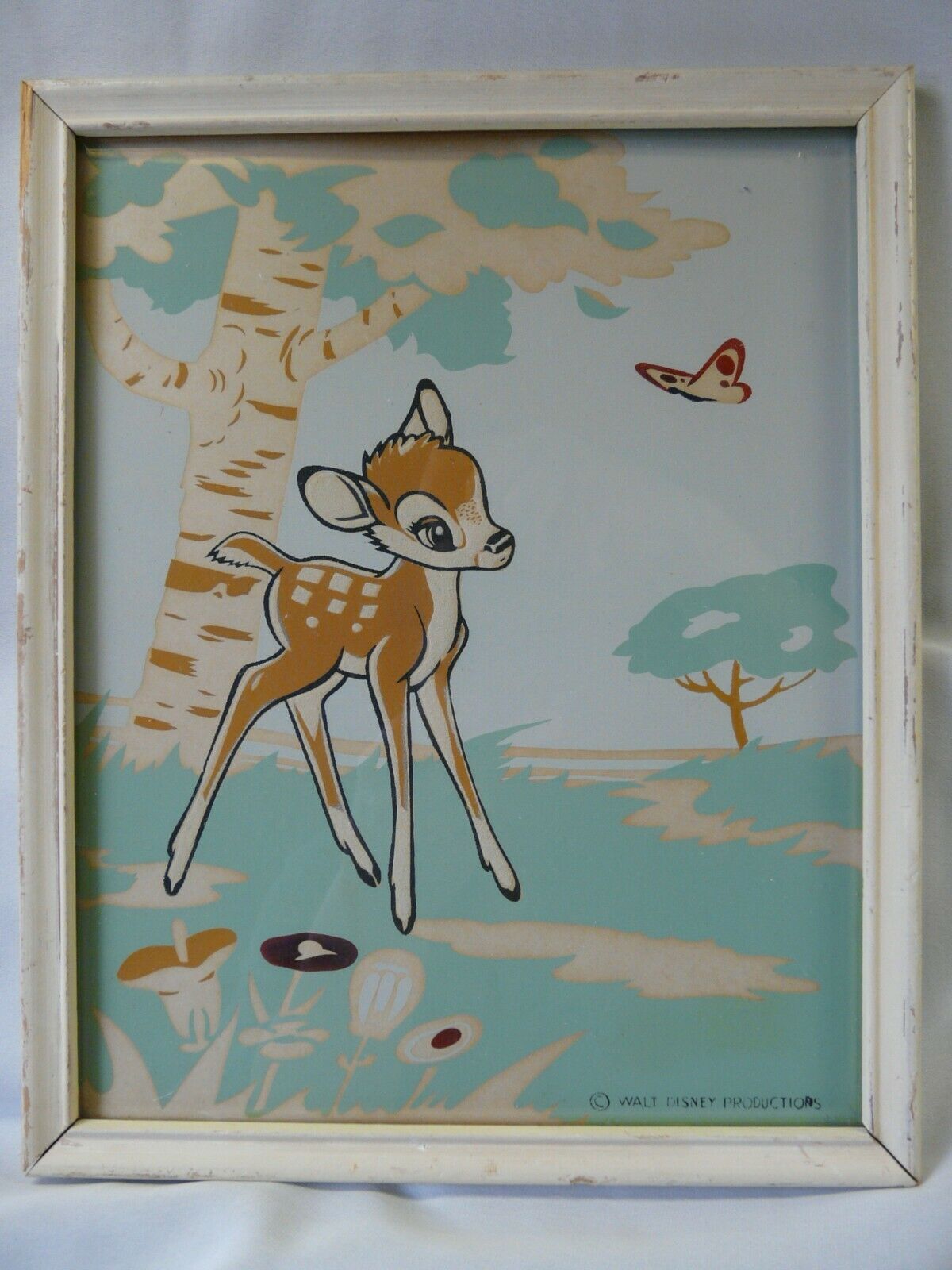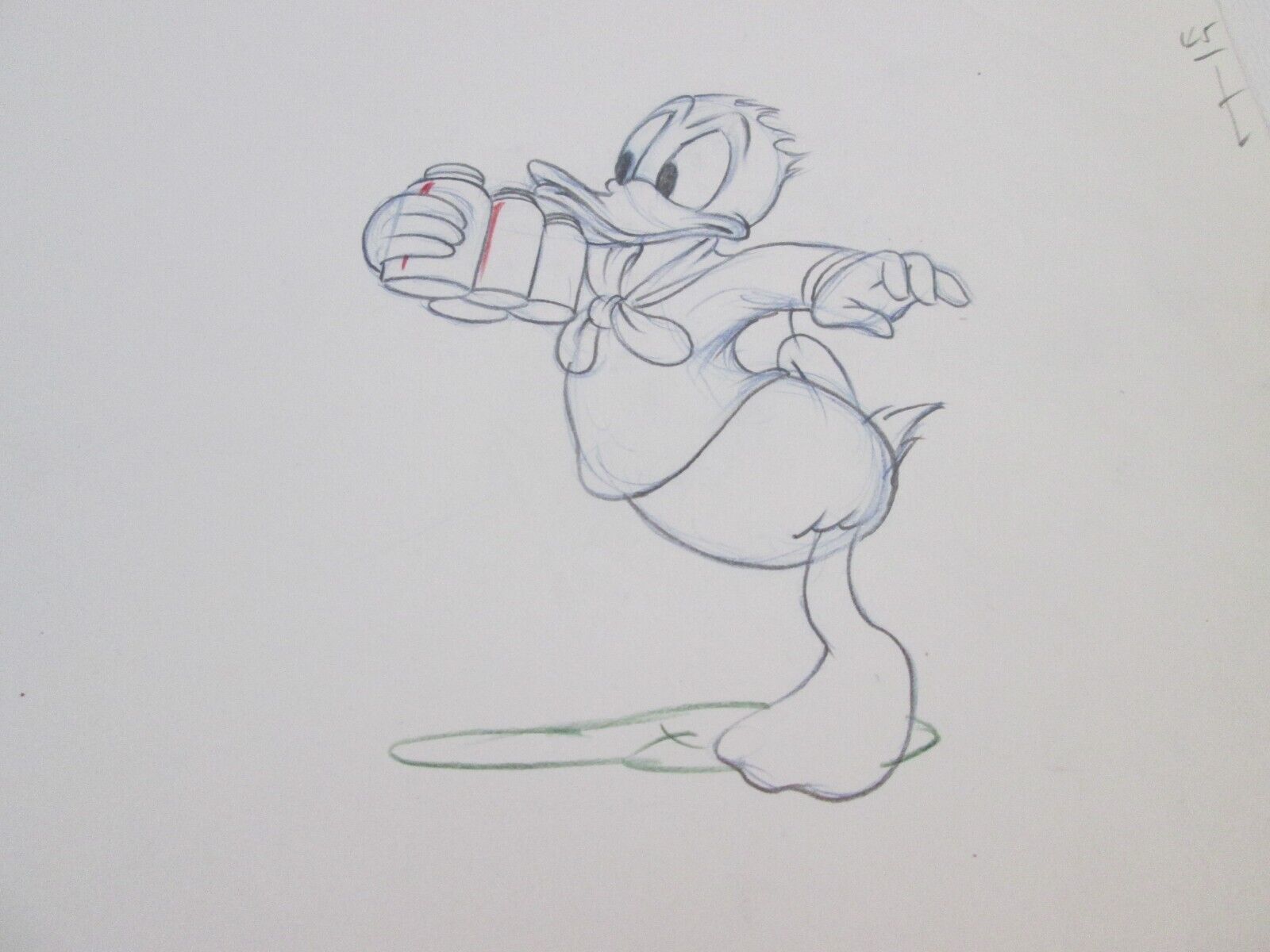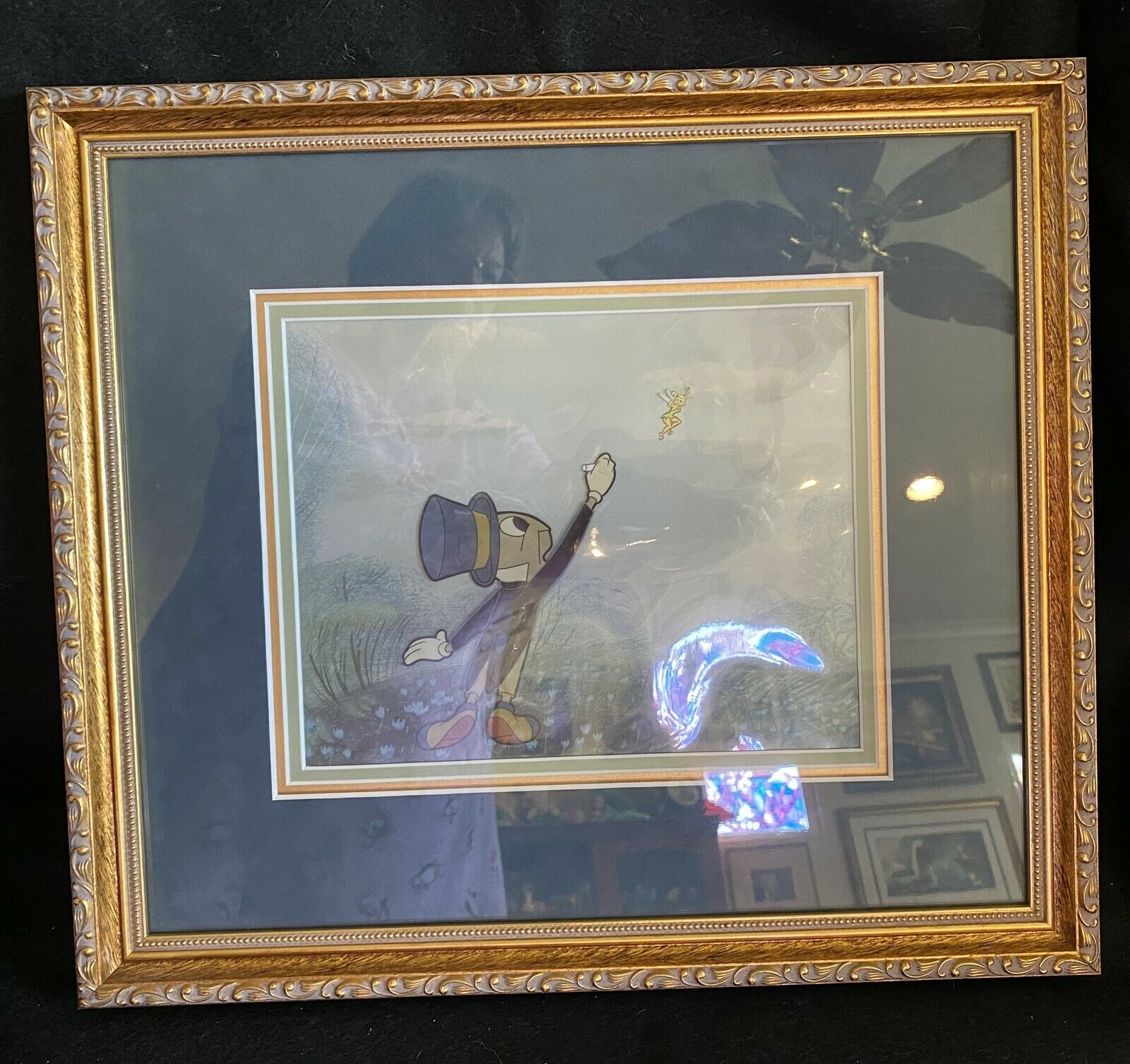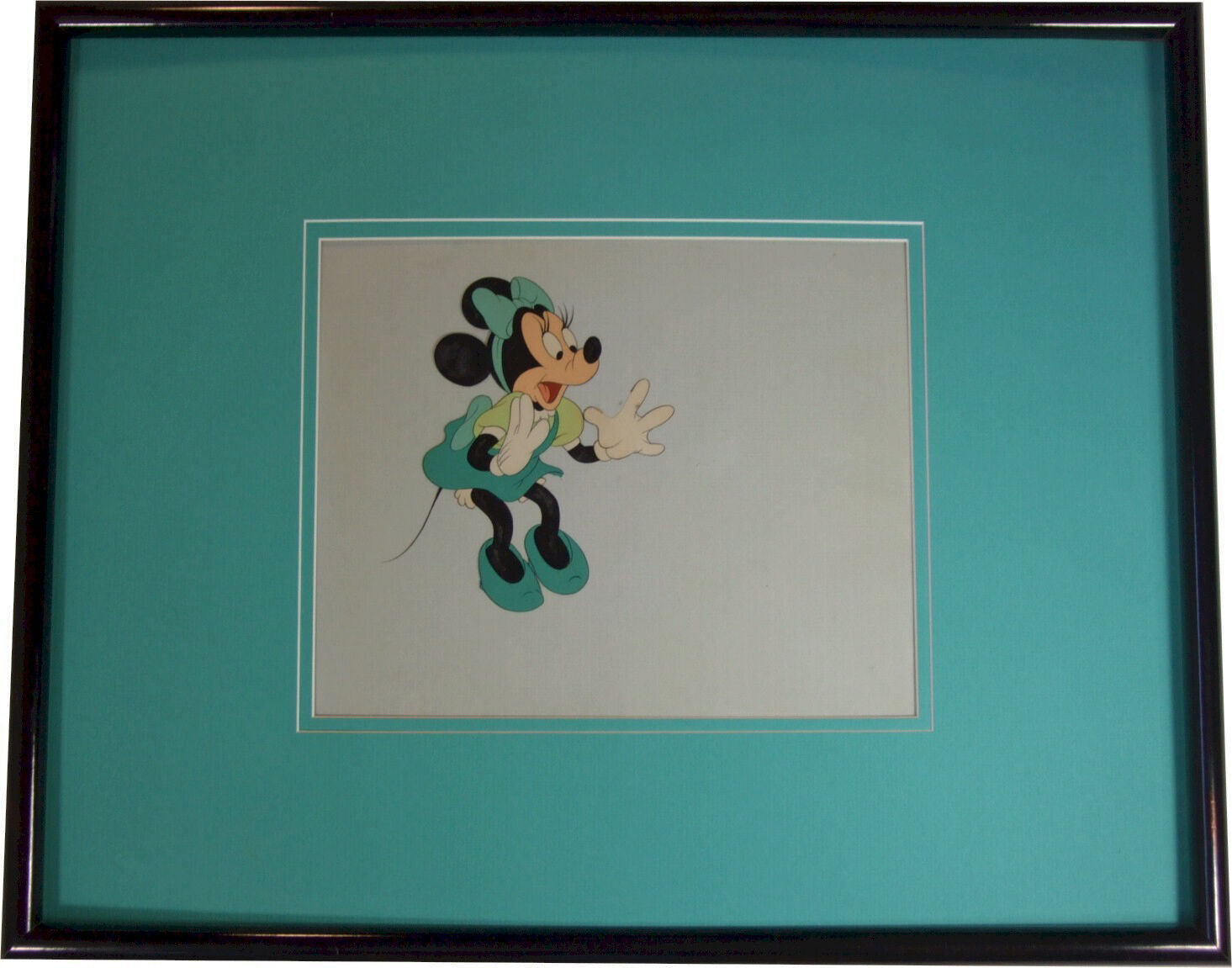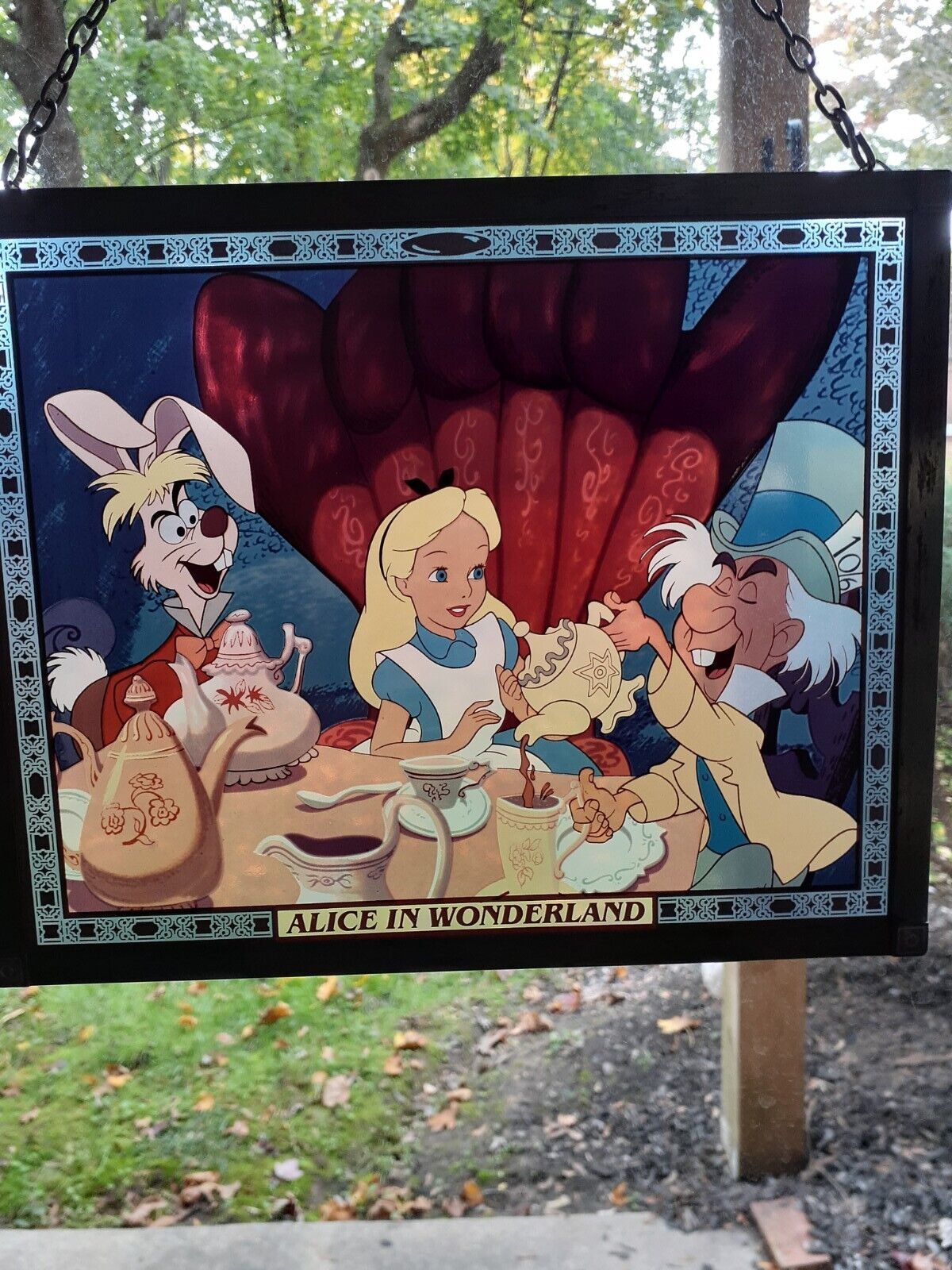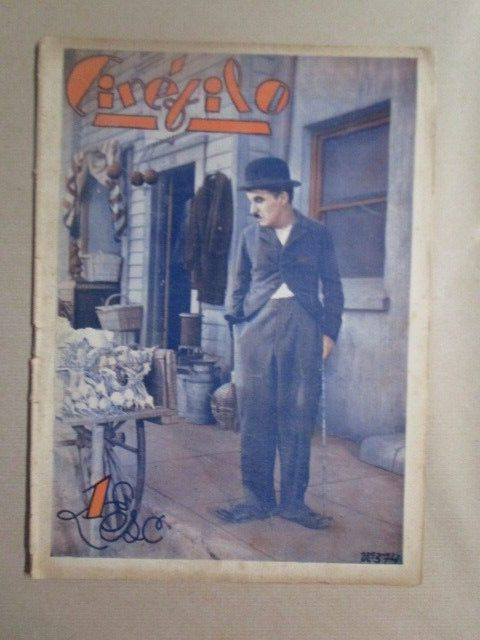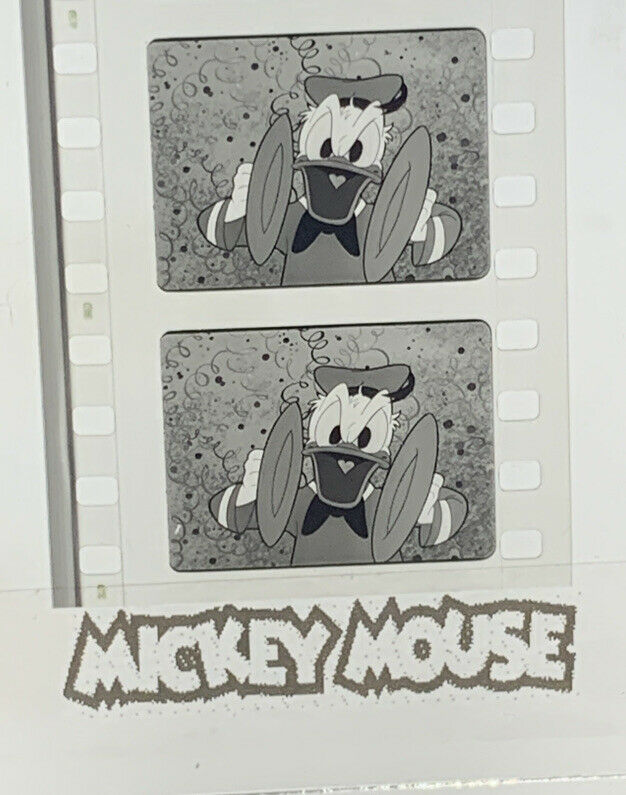-40%
🔥 RARE Antique Mid Century Original Disney Animation Art, Mickey - Carl Barks
$ 712.8
- Description
- Size Guide
Description
This is a RARE Antique Mid Century Original Disney Animation Illustrated Concept Art Storyboard, by famed Disney Studios artist Carl Barks (1901 - 2000.) These works are red line pencil on animation tracing paper (mounted on Crescent Board), and depicts Donald Duck, Daisy Duck, Mickey Mouse, Minnie Mouse & Goofy, among others. This storyboard has two complete individual drawings. The top artwork shows Donald Duck dresses in Christmas clothing and driving a small train full of holiday toys. This appears to be a conceptual scene from “A Christmas for Shacktown” by Carl Barks, originally published in January, 1952. I believe that these illustrations also date to the early 1950’s. The second and larger drawing depicts many of the well known Disney characters marching in a straight line, carrying candy canes and Christmas presents. Mickey Mouse is at the head of the line, acting as a conductor. The top drawing is approximately 7 1/2 x 12 1/4 inches. The bottom drawing is approximately 6 1/2 x 24 1/4 inches. Actual board is approximately 18 x 28 1/4 inches. Total artwork, including frame, is approximately 21 5/8 x 31 1/2 inches. This work is not signed, as it was not meant to be sold or distributed, and was a Disney studio item for work use. It is likely that a fellow animator took this discarded storyboard and decided to keep it as a memento. Please refer to the published works of Carl Barks, particularly his Donald Duck comics, for visual comparison. Acquired from the contents of a deceased estate in Orange County, Southern California. There are some condition issues, such as creasing, light edge wear, and small tears to the edges. There are no actual condition issues to the drawn characters themselves. Issues such as these are easily reversed and fully restorable with a competent paper conservationist. These artworks were found unframed, and mounted in an inexpensive frame from Target for protection and display purposes. Please check my other listings for more wonderful and unique artworks!About Carl Barks:
Born in 1901 on a grain ranch near Merrill, Oregon, Carl Barks has spent most of his life drawing, illustrating, painting and telling stories about ducks. Disney Ducks have always been the favorites. In 1935, Carl joined Walt Disney Productions as a storyboard artist, gag man and writer. He worked on such famous cartoons as Donald's Nephews (1928), Donald's Cousin Gus (1939), Timber (1941), The Vanishing Private (1942) and The Plastics Inventor (1944). He was known by many nicknames, including the "Good Duck Artist", the “Duck Man”, the “Good Artist” and the “Comic Book King” for his work on Donald Duck in the days before artists were credited. For many years, Carl was the preeminent Disney comic book artist. His numbers had great popularity, and his contributions to the Duck family are notable. In the cartoons, Donald is mainly a loafing, lazy hothead with a barely understandable quacking. To make him suitable for a comic book, Barks gave Donald articulated speech and shaded emotions.As the creator of 'Scrooge McDuck', Carl Barks did more than any other comic book artist to widen the popularity of Donald Duck, bringing in the process a vast array of memorable supporting characters into the Disney universe, among them Uncle Scrooge himself, Gladstone Gander, Gyro Gearloose (and his Little Helper), the Beagle Boys, and the Junior Woodchucks. He is generally credited with giving Huey, Dewey, and Louie their distinctive personalities. Duckburg and many of the Duck clan owe their existence to his pen and paintbrush.Unlike many other artists working (all anonymously) for the Disney company, Barks did not mindlessly churn out condescending, forgettable stories of a childish nature during his 24-year stint on the Disney Ducks. He consistently produced delightful top-quality material, both in his scripts and in his art as well as in his dialogues, which echoed with deep human resonance. "I polished and polished on the scripts and drawings until I had done the best I could in the time available", he said. In both types of stories -- the 10-page comedies and the longer adventure stories -- he produced between 1942 and 1966, he managed to convey the intricacies and subtleties of the full scope of human emotions (from envy and cynicism and alarm and desperation to joy and scorn and triumph and smugness) while capturing the essence of exotic locations from the four corners of the world (from scorching deserts and primal forests to humid jungles and freezing snow-clad mountains through the urban setting of Duckburg). His mastery at this is witnessed to by, among others, Newsweek's homage to his artistry and by Time's conclusion that "Scrooge and his creator Carl Barks belong in the great mainstream of American Folklore." His publishers tried in the early '50s to replace him on the 10-page comedies in Walt Disney's Comics and Stories so that he could concentrate on the longer adventure epics in Donald Duck and Uncle Scrooge (these were the three titles that contained the bulk of Barks' output through the years); they were promptly flooded with a barrage of pleading and irate letters from readers demanding that "the good artist" be brought back.
Among his many fans were George Lucas, and Steven Spielberg, who were inspired by the adventure comic books. One South American adventure in particular ("The Prize of Pizarro", Uncle Scrooge 1959) inspired sequences in all three Indiana Jones films (the booby traps both in the lost temple in the opening pre-credits sequence of Raiders of the Lost Ark (1981), and in the final scenes of Indiana Jones and the Last Crusade (1989), as well as the flood through the mines of Indiana Jones and the Temple of Doom (1984)). In an homage printed in Uncle Scrooge: His Life & Times (edited by Edward Summer and published by Gary Kurtz), Lucas writes that when he discovered the McDuck character as a kid, he liked him "so much that I immediately went out and bought all the Uncle Scrooge comics I could find on the newsstand. My greatest source of enjoyment in Carl Barks' comics is in the imagination of his stories… The stories are also very cinematic .... these comics are a priceless part of our literary heritage." Indeed, the titles of his adventures (many of which were inspired by the National Geographic) duly resonate with exoticism and adventure: "The Mummy's Ring", "Terror of the River", "Mystery of the Swamp", "Ghost of the Grotto", "Lost in the Andes", "Sheriff of Bullet Valley", "Trail of the Unicorn", "The Golden Helmet", "The Seven Cities of Cibola", etc. His stories were constantly reproduced in Disney comics across the globe, after his retirement in 1966 (the same year that Walt Disney, who was born nine months after Barks, died). And soon his 6,371 comics pages (according to one count) from some 450 comic books were being reprinted (by then computer-colored) in impressive coffee-table volumes and hand-sewn hardback tomes, not just in the United States, but throughout the western world. Certainly the most widely read comic book artist of all time, Barks is also in all probability, what with Disney being the world's largest publisher of children's magazines and books (every year over two billion people around the globe read a Disney book or magazine, the company claims), the most widely-read author of any type of reading material of the 20th century.
Born to a homesteading family in Oregon on March 27, 1901, Carl Barks left school at 15 and spent the next two decades "in grim and demanding jobs" (to quote Michael Barrier's "Carl Barks and the Art of the Comic Book". These included rancher, logger, railroad repairman and printer. During the Depression, he went on to become an illustrator for a humor magazine, eventually becoming its most productive member. He joined the Disney studio in 1935, where he became a story man on the animated cartoons of a character created a year earlier (a duck by the name of Donald) and worked with such people as Harry Reeves, Chuck Couch, Jack Hannah, Homer Brightman and Nick George. Health problems eventually forced Barks to leave the Burbank studio during World War II for the dry air of the California desert, where he made the transition to comic books.
And so, it was after the age of 40, in an era when most people had little more than a third of their lives in front of them, that Carl Barks made the fateful jump of his life, the one that would leave his name an immortal one in the annals of what the French call "le neuvième art" (the ninth art form). And yet, it would not be until after his retirement that his name would, slowly but surely, become known to the mainstream public. It was during the 1960s that persistent fans (among them his official biographer, Michael Barrier) finally managed to identify "the good artist" (also dubbed the Duckman and the comic book king), become his correspondents, and proceed to make his name known to the outside world.
Despite having retired (and as his name was slowly becoming famous), "Unca Carl" did not remain inactive. He turned to painting, specifically signed oil paintings of his Disney Ducks, paintings that today easily fetch thousands of dollars and whose prices have occasionally topped 0,000. Indeed, it is easy to forget that Barks' retirement years lasted far longer than his comic book career and he spent many more years before the canvas than he did over the drawing board. In fact, Barks lived to the ripe old age of 99, and it is somewhat amazing to realize how vast an amount of time this actually means. His life spans such an extensive amount of time that his date of birth is further removed from that of his death than it is to the Lewis and Clark expedition to explore the untamed wilderness west of the Mississippi (including Oregon, the region where the Barks family would eventually settle).
He was sprightly and active until the very last. People half his age reported that he could remember events they had long forgotten. His pace was such that during his 1994 trip to Europe (his first outside North America) to celebrate Donald's 60th birthday, young Disney handlers and PR staff at Paris' Euro Disneyland had to quicken their pace to keep up with the then-93-year-old man. His philosophy could be summarized in these words: "I worked hard at trying to make something as good as I could possibly make it... I always tried to write a story I wouldn't mind buying myself." Carl Barks passed away in 2000.
